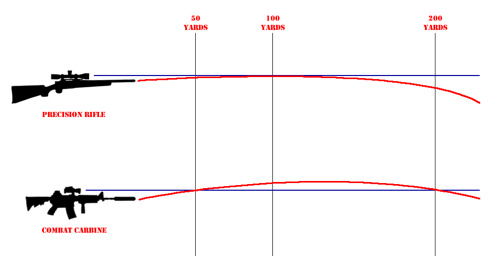Does anyone know the process to what they call "hunting or field" zero your rifle at 25 yards for 100?
I remember a WHILE back I quick read an article on the way to do this and I remember they had a supplied target with impact adjustments for 5.56 and 308 loads. But never thought of it because I've always just gone to the 100 yard range to zero. But I just got finished with my MK11/M110 LR308 build and this will be my comp gun and my local matches don't allow you to zero before the matches to make time.
I won't be able to make it to any 100 yard ranges before the next match and am limited to 25 yard indoor ranges. So does anyone know the process on doing this? Yea I know it's not 100% zero but it's on paper which is all I need till I can full zero this thing.
I've already ran my load work up through JBM ballistics. It's a 168gr pet load.
JBM says for a 100 yard zero:
25 yards - -1.8" or -.5 mil (for elevation scope adjustments)
100 yards - 0.0" or 0.0 mil
So does this mean at 25 yards I set an center point with a center dot 1.8" high or 1.8" low of my point of aim and have my POI be that? Cause I know 5.56 and 308 have different flight patterns from 25-100 and I'm just having a brain fart figuring out what I need to do for this.
I remember a WHILE back I quick read an article on the way to do this and I remember they had a supplied target with impact adjustments for 5.56 and 308 loads. But never thought of it because I've always just gone to the 100 yard range to zero. But I just got finished with my MK11/M110 LR308 build and this will be my comp gun and my local matches don't allow you to zero before the matches to make time.
I won't be able to make it to any 100 yard ranges before the next match and am limited to 25 yard indoor ranges. So does anyone know the process on doing this? Yea I know it's not 100% zero but it's on paper which is all I need till I can full zero this thing.
I've already ran my load work up through JBM ballistics. It's a 168gr pet load.
JBM says for a 100 yard zero:
25 yards - -1.8" or -.5 mil (for elevation scope adjustments)
100 yards - 0.0" or 0.0 mil
So does this mean at 25 yards I set an center point with a center dot 1.8" high or 1.8" low of my point of aim and have my POI be that? Cause I know 5.56 and 308 have different flight patterns from 25-100 and I'm just having a brain fart figuring out what I need to do for this.
Last edited:


